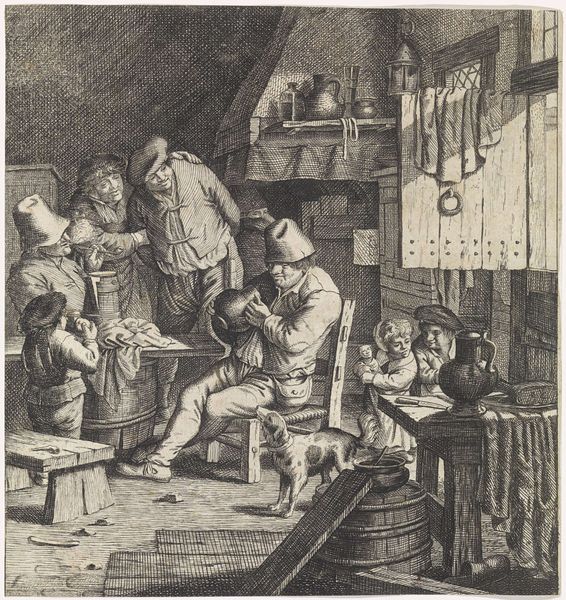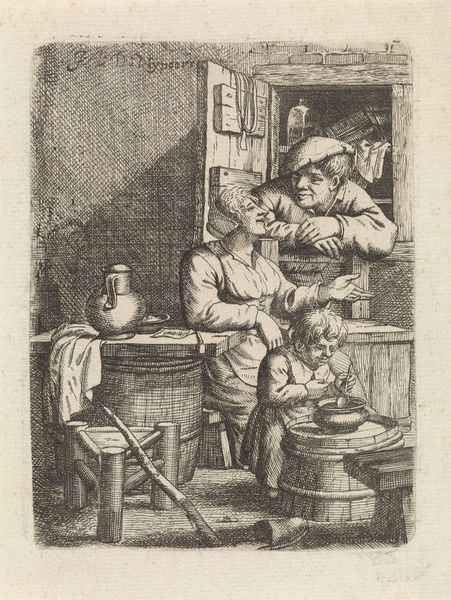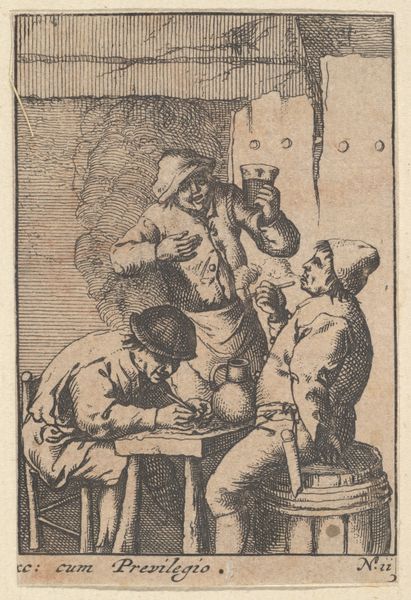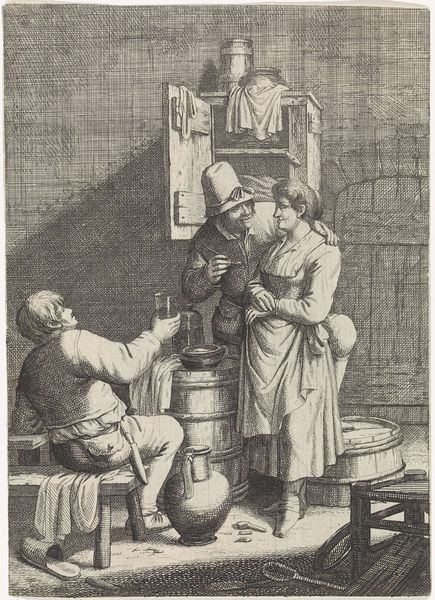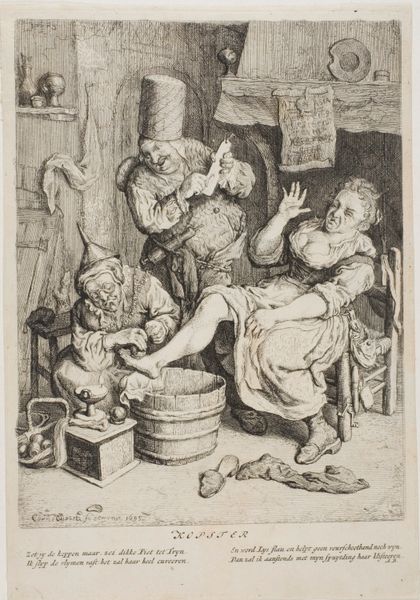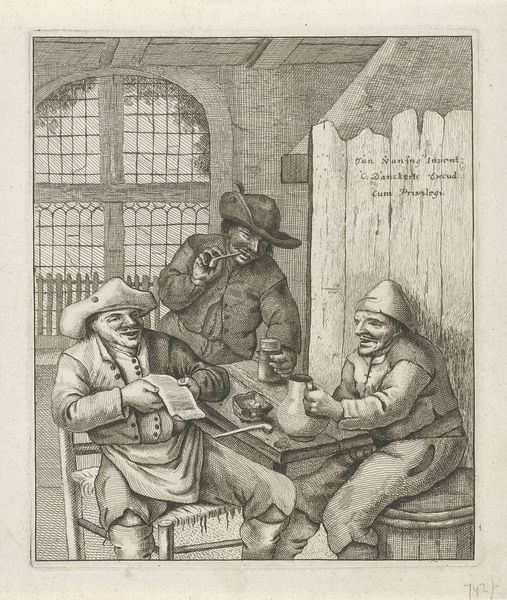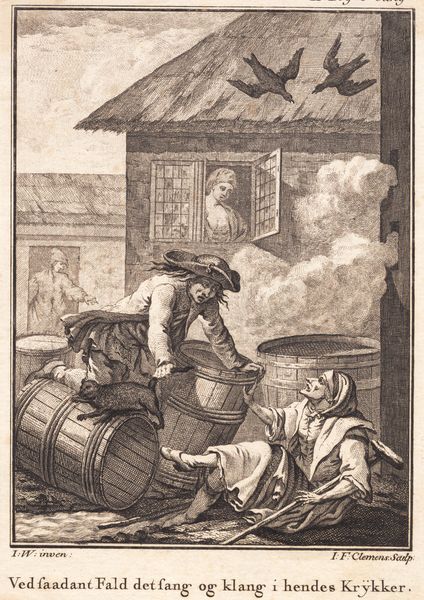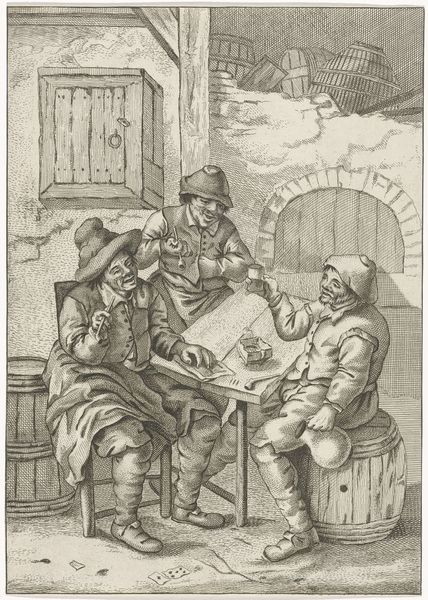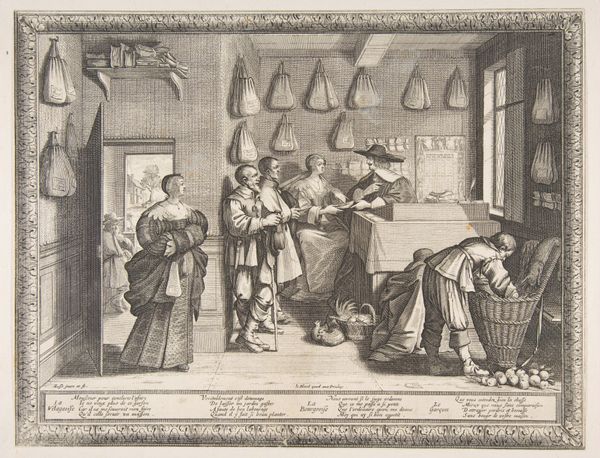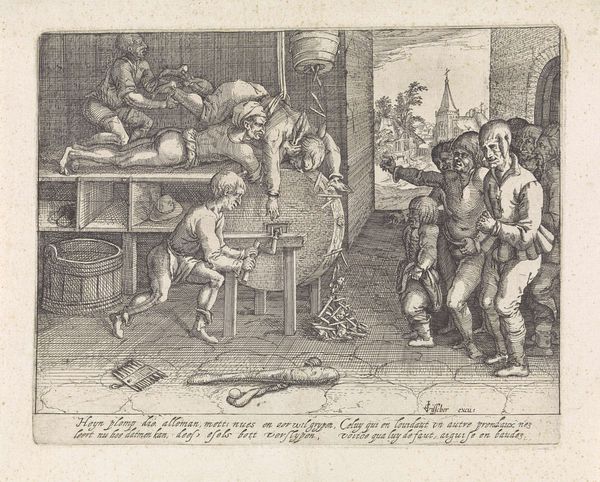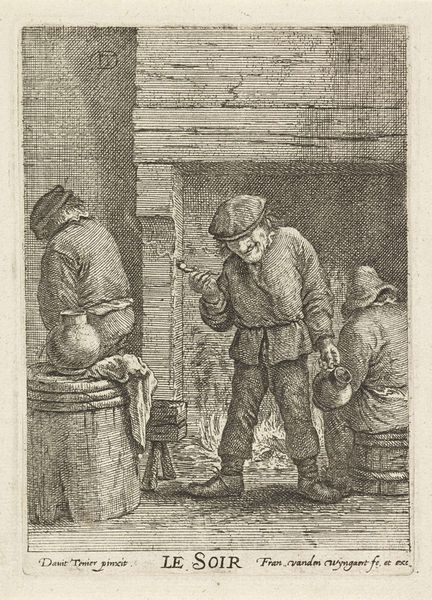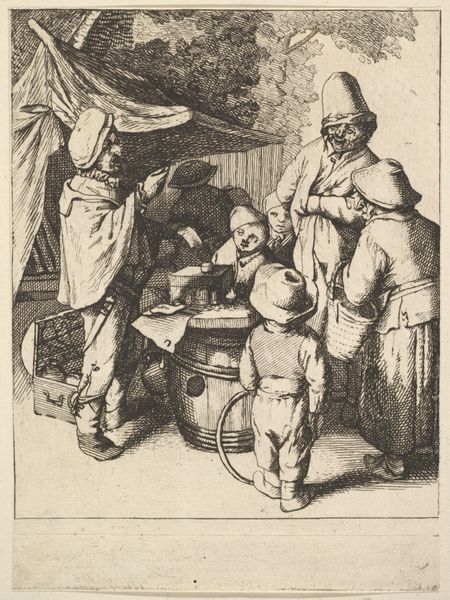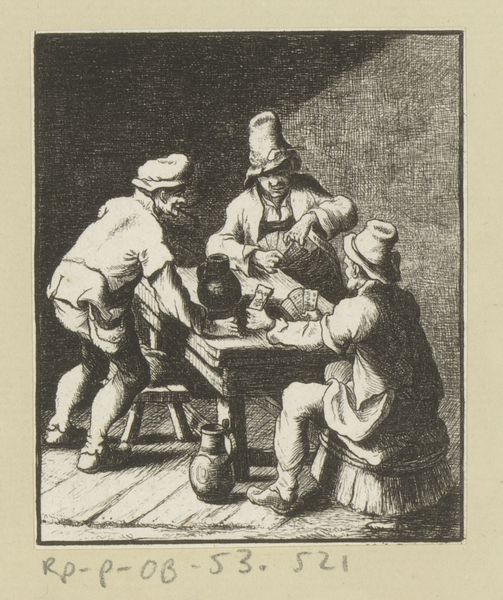
print, engraving
#
dutch-golden-age
# print
#
old engraving style
#
figuration
#
line
#
genre-painting
#
engraving
Dimensions: height 144 mm, width 127 mm
Copyright: Rijks Museum: Open Domain
Curator: Here we have "Interior with a Woman Reading a Letter," a 17th-century engraving from Justus van den Nijpoort. Editor: It's instantly captivating. The textures, despite being printed, feel tangible—rough wood, aged brick, and the smoky haze that seems to cling to every surface. Curator: Van den Nijpoort, while lesser-known today, operated within the vibrant context of the Dutch Golden Age. His prints provide valuable glimpses into the domestic lives and social dynamics of the period. The depiction of a woman reading, or perhaps receiving news, offers a potential focal point for examining gender roles and literacy. Editor: Yes, and look how skillfully he manipulates line to define form. The cross-hatching builds depth, while lighter touches convey a sense of airy space. Semiotically, the letter itself is heavy with meaning. Is it correspondence with a far-off lover, a business proposal, a note from a friend? The possibilities are intriguing. Curator: Given that the woman seems to be the central focus, it would be fascinating to understand the power dynamics within this interior. The men gathered around the table—do they have a say in what is being communicated to this woman, and how does their presence define her existence? Her actions must always occur within the purview of societal standards. Editor: Consider the objects placed meticulously within the composition: The carafe hints at convivial indulgence, the pipe—smoldering softly—points towards moments of introspection, perhaps hinting at hidden depths. Notice, also, the simple arrangement, with a composition that focuses around this central table. Curator: Absolutely. In terms of socio-historical context, objects themselves carry cultural weight. Access to writing materials, levels of literacy, leisure time to drink. What did the existence of the working classes look like? Editor: Nijpoort invites the viewer to question the subtle visual cues. These visual details give us context and create meaning. Curator: And it also shows the ways gender, race, class and privilege have always been central considerations in life. This piece of art history helps us engage in contemporary theories, and vice versa. Editor: Exactly, from the detailed hatching to the way that the room’s lighting seems to be defined, the impact here feels intensely lived-in and thought-through. Curator: Thinking through these different interpretive frames really allows the past to inform our present.
Comments
No comments
Be the first to comment and join the conversation on the ultimate creative platform.
